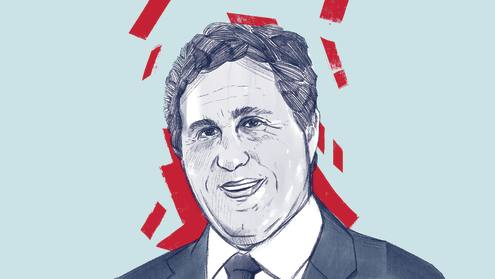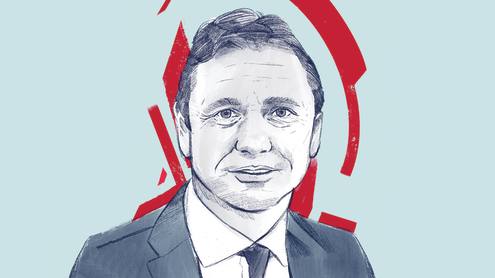More than 10 years have elapsed since the start of the financial crisis, in August 2007, when the subprime market was gravely disrupted. Since then, central bankers have experienced demanding times, characterised by a succession of shocks in the advanced economies unseen since World War Two.
I would like to address two questions from the standpoint of central banks, particularly central banks in the advanced economies that were at the epicentre of the crisis. First, what were the main causes of the advanced economies crisis? And, second, how can we interpret what I call the 'conceptual convergence' observed in a significant number of central banks of the advanced economies?
i) Major causes of the advanced economies crisis
Many reasons might explain why the financial system of the advanced economies proved as fragile as a house of cards. Without being exhaustive, I would propose five major reasons, which are mutually reinforcing:
First, the extreme sophistication of financial instruments, the development of securitisation, the generalisation of derivatives markets of all kinds, the very rapid growth of shadow banking, and the emergence of highly leveraged institutions that were created progressively in the 20 years before the crisis led to a new financial environment that was complex, often obscure and difficult to decipher.
Second, there was an extraordinary increase of interconnectedness between all financial and non-financial institutions, markets and economies at national and international levels, fostered by the advances of IT and by globalisation. This unseen level of interconnectedness has given rise to new, untested properties of global finance.
Third, there was a generalisation of a sentiment of excessive tranquillity and confidence, both in the public and the private sectors. The 'great moderation', characterising the period from the mid-1980s to the mid-2000s, gave the false impression that the low volatility of both output and inflation – in a context of steady growth and low inflation – would last for a considerably longer period of time and no longer required traditional prudent and cautious macro policies.
Fourth, closely linked with the previous reason, there was a consensus of the international community on the efficiency of markets in almost all circumstances. Dominant dynamic stochastic general equilibrium macro models failed to predict the crisis and seemed, during the three quarters following Lehman Brothers bankruptcy, in great difficulty to explain what was happening to the economy in a convincing manner. As I said myself in 2011: “In the face of the crisis, we felt abandoned by conventional tools."
And fifth, a generalised excess of private and public leverage was progressively built in the advanced economies. This phenomenon was largely neglected by the international community over many years before the crisis, along with the financial instability hypothesis of Hyman Minsky and the debt-deflation analysis of Irving Fisher. This fifth reason was strongly underlined during the crisis.
The international community can be forgiven for missing the first two reasons. Digital globalisation was likely to give birth to new emerging properties of global economy and finance that are far from being fully elucidated. It is more difficult to pardon the last three reasons, in particular the neglect of over-indebtedness.
The crisis was a cruel reminder not only of the 'financial instability hypothesis' or of the 'debt-deflation' analysis but also of this 'Knightian uncertainty', which refuses to be encapsulated in probability modelling.
ii) The emergence of a new 'conceptual convergence' among central banks
Having to cope with the dramatic events occurring in the advanced economies in 2007 and 2008 and their consequences, central banks had the lucidity and the courage to take bold and swift decisions to avoid a great depression. They were coping with very different economies, with significantly different financial structures, with different types of challenges, as was and is the case in the euro area compared with the US, and with very diverse cultural backgrounds and conceptual references. One could have expected that, under the pressure of their own economies' idiosyncrasies, the shock of the crisis would have accentuated their differences and given rise to an even more diverse set of decisions in a selfish, inward-looking mode.
But on the contrary, central banks appeared to be, not only practically but also theoretically, significantly closer when confronted by economic and financial turmoil. This phenomenon was spectacular immediately after the Lehman Brothers bankruptcy on September 15, 2008, with the closest ever co-operation between international central banks, including through a multi-lateral network of swaps lines communicated globally by major central banks as soon as September 18, and through a concerted reduction of interest rates on October 8.
The global financial crisis has also started (or accelerated) a multi-dimensional process of rapprochement of key elements of thinking and making monetary policy between central banks. I characterise this phenomenon as a process of 'conceptual convergence'. On top of the close co-operation between central banks and of the generalisation of unconventional monetary policies, I see five dimensions along which, in my view, 'conceptual convergence' occurred and is occurring.
1. The best place for locating banking surveillance
Fifteen years ago, there was a profound split among countries and central banks. The UK was becoming hostile to its central bank being involved in banking surveillance. The euro area was split between countries favouring a deep involvement of central banks in banking surveillance and countries that were opposed to such a concept.
Today, the landscape is profoundly different. The UK returned to its long-standing tradition of giving key banking surveillance responsibilities to its central bank. The euro area has decided to put its new 'single surveillance authority' under the responsibility of the European Central Bank (ECB). And the US has reformed banking surveillance in reinforcing some responsibilities of the Federal Reserve System.
2. The prevention of systemic risks
All major advanced economies, without exception, consider that their central banks are well placed to play an important role in the domain of prevention of systemic risks and of macroprudential policy. Two new institutions, on both sides of the Atlantic, bear witness to this trend: the Financial Stability Oversight Council and the European Systemic Risk Board.
It is remarkable that the financial crisis has not only contributed to creating a large consensus in favour of central banks being significantly involved in banking surveillance and microprudential measures, but has also helped crystallise a consensus on the importance of macroprudential rules, where central banks are also called to play a pivotal role.
3. The role for money and monetary aggregates, its components and counterparts in monetary policy
Though it may still be disputed, I see a third dimension of 'conceptual convergence': the progressive recognition that monitoring money and credit remains important in monetary policy. After years of financial crises, so evidently triggered by the dynamics of credit to the private and public sectors – namely, the dynamics of counterparts of monetary aggregates – things have changed. The 'benign neglect' of money and finance by the dominant theory in monetary economics triggered, in the advanced economies, one of the most dramatic challenges for monetary policy over a century. I experienced this somewhat bizarre period before the crisis, when the ECB’s monetary policy, with its 'two-pillar' (economic and monetary) framework, was heavily criticised by many academics.
We are now in a different universe. It is largely accepted by central banks and academia that there is indeed information contained in money and credit dynamics that is important for monetary policy, even if this information is obviously difficult to extract and decipher.
4. The concept of utilising comprehensive communication tools
As regards the improvement in communication through the generalisation of press conferences, the convergence took some time. But it has also been spectacular, with the first Fed chair conferences, ECB-like, starting in April 2011. It is not surprising that such communication tools have become generalised among major central banks. The absence of immediate real-time explanations, which was the rule in the 1990s, was already often triggering several − sometimes contradictory − interpretations of the decisions of the central banks, creating unwelcome market volatility.
But the crisis triggered a new demand for expanded communication, not only to the market participants but also to the general public. Today, the major central banks of the advanced economies all use press conferences and other sophisticated tools to communicate with a large public.
5. Last but not least, the convergence on same definition of price stability
Regarding the definition of price stability or the level of an inflation target, 15 years ago only half of the four major central banks of the advanced economies were mentioning this, the ECB and the Bank of England. Since the Fed’s decision in 2012 and the statement of the Bank of Japan in 2013, all four now mention the 2% figure, which has become a global benchmark among all the large advanced economies.
I expect academia to continue working actively on the best definition of price stability in the long run: is it really 2%? Shouldn’t it be 4%? What about 0%? What about targeting the level of prices instead of inflation? I would also suggest to academia it would be important to understand better why, in the worst financial crisis since World War Two, major central banks of the advanced economies considered independently that a more solid anchoring of medium- to long-term inflation expectations – at the same arithmetic level – was appropriate.
It would be naïve to consider the simple fact that central banks of advanced economies have converged towards the same price stability definition as an effective global game changer. But it is, in my view, probably one of the necessary conditions, among many others, for engineering more medium- and long-term stability in the international monetary system.
So what now?
This brief review of some issues associated with central banks in time of crisis suggests one reason to be reasonably positive, when looking at the past, and two reasons for reinforcing vigilance as regards the future.
First, I see two main elements calling for positive appreciation. These are the capacity of central banks to be lucid, bold and swift at the moment the crisis burst, and to avoid the great depression that was looming; and the global co-operation that proved effective and was reinforced symbolically and materially by the 'conceptual convergence' between central banks.
Second, as previously explained, the dramatic financial crisis of 2007-08 was largely due to excessive public and private global leveraging. Instead of diminishing, being at a standstill, or, at least, slowing down, it looks like the global leveraging increase has continued at the same speed after the crisis. It is urgent for the international community to correct the situation if we want to avoid new global financial turbulence.
Third, since the crisis, many countries and economies have been relying on central banks to offset permanently the shortcomings of other authorities or partners (namely governments, private sector and social partners). This was acceptable in the heat of the crisis but it is not acceptable as a structural feature of our economies. The central banks must now exit progressively from their unconventional accommodating policies and cannot switch to those which are in charge of budget, macro policies, structural reforms, negotiation of wages, etc. It is imperative that the public and private sectors take into account the public messages sent by central bankers if we want to prevent future systemic global crises.
Jean-Claude Trichet is former president of the European Central Bank.












